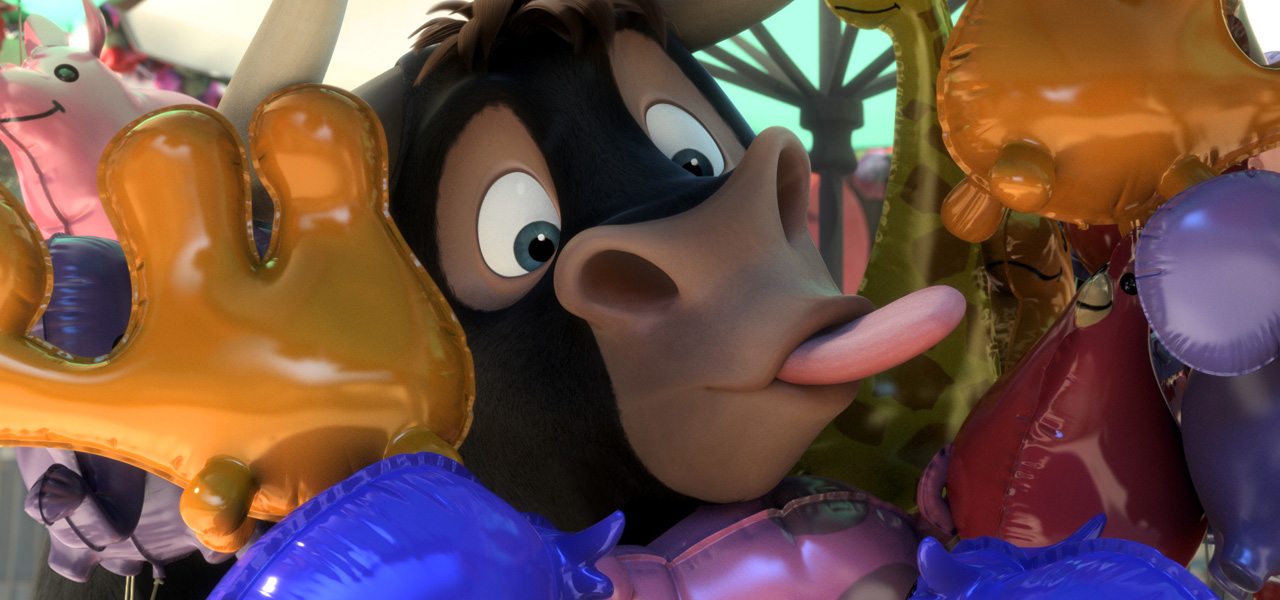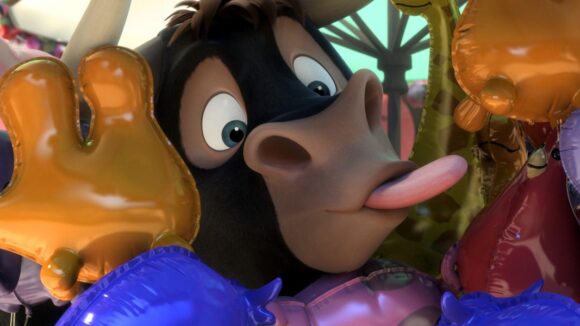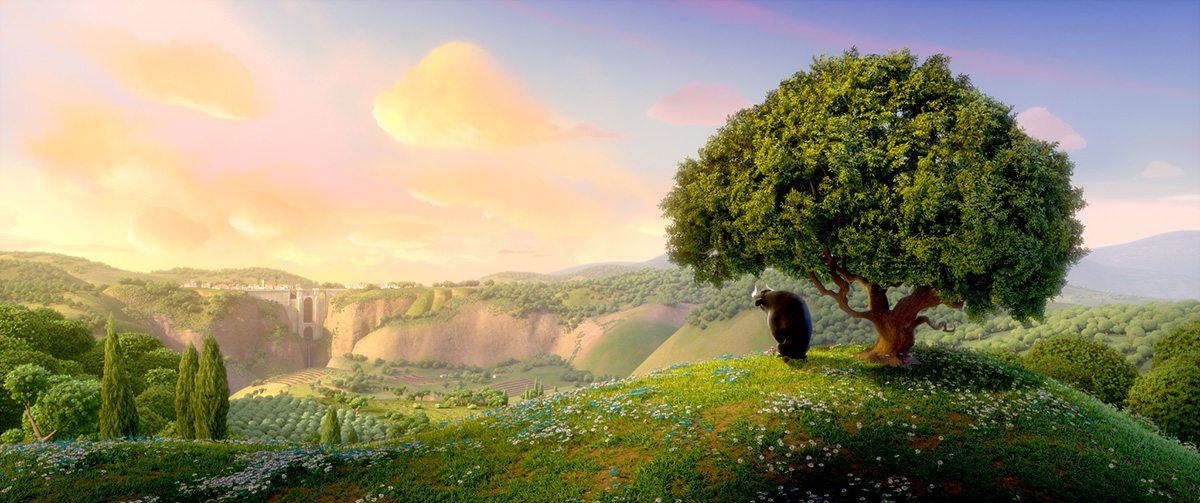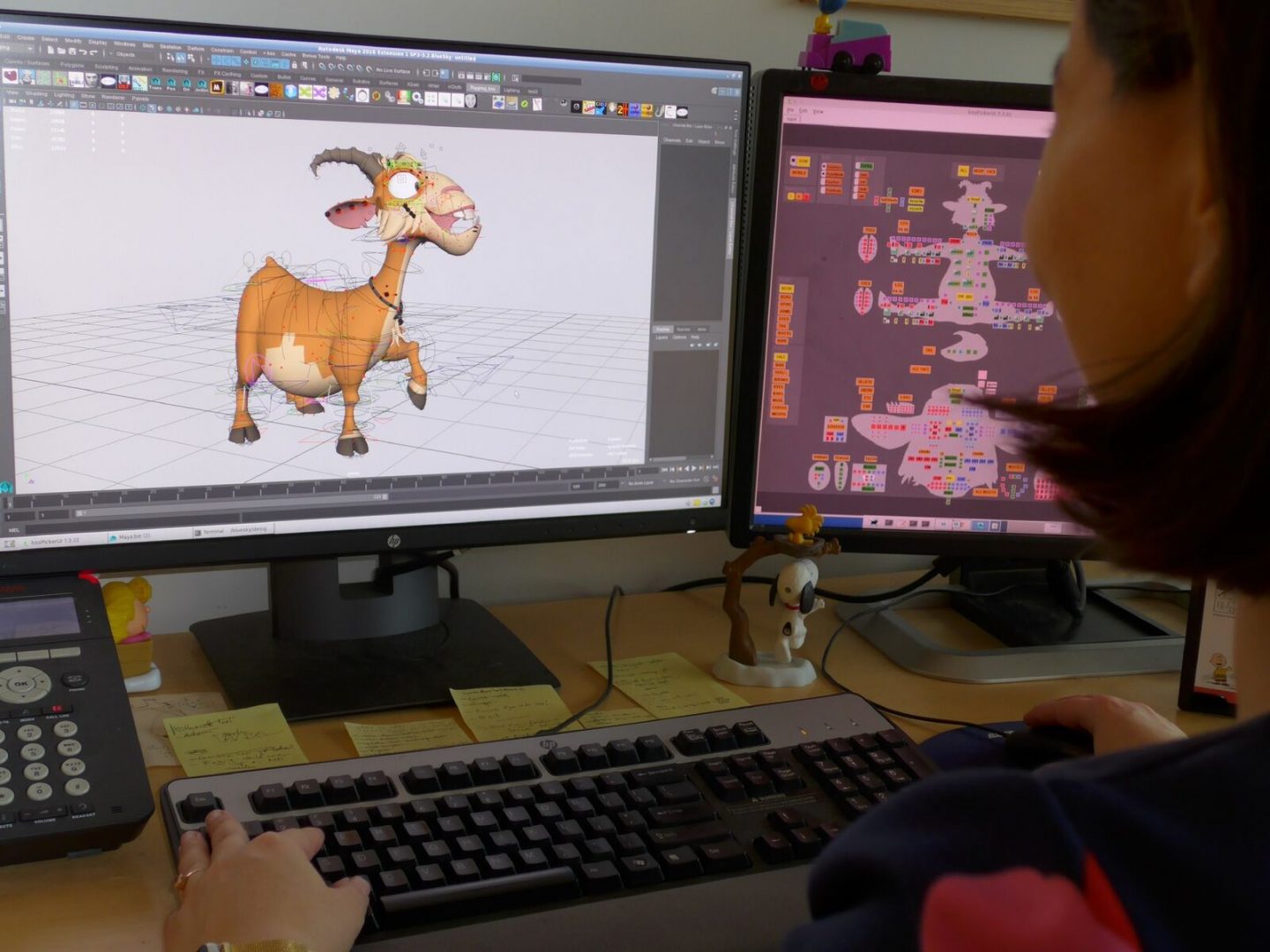

‘Ferdinand’: Q&A with Blue Sky Director Carlos Saldanha
Ferdinand is Blue Sky Studios’ twelfth animated feature film. Director Carlos Saldanha, whose most recent outing was Rio 2, directed this adaptation of Munro Leaf and Robert Lawson’s 1936 children’s book The Story of Ferdinand, about an unconventional Spanish bull who is not at all interested in bullfighting.
Several years in the making, Ferdinand greatly expands upon the children’s book with a host of other animals alongside the main character (voiced by John Cena). There are several other bulls, a calming goat, horses, and even hedgehogs, plus human characters who Ferdinand befriends.
In this interview with Cartoon Brew, Saldanha details how the relatively simple children’s book was fleshed out into an entire feature, how characters added to the humor, the approach to design in the film, and what some of the toughest scenes to animate were.
Cartoon Brew: How did you approach expanding upon the storybook?
Carlos Saldanha: It’s very hard because the book was very simple, but yet very charming, and I really wanted to tap into that. Even though the book was short, the message I thought was very big. It’s up for each person that reads the book to take it their own way. In order to make it into the movie I tapped into those reactions. I asked people what were their thoughts when they read the book. I tried to get different perspectives, and everything came towards that idea of, It’s be true to who you are. That’s the most important thing. Off of that message then, I tried to expand it to a ‘do it without violence’ and ‘do it by example,’ but not by using violence to prove your point. Never judge someone for the outside, but rather for who they are on the inside.

The opening sequence to the film, which shows the young bulls watching their fathers going through the matador selection process, seemed like a great way to establish the ‘rules’ of the film, and that Ferdinand was not interested in being selected. How did you come up with the beats for that sequence?
Carlos Saldanha: That was one of the toughest sequences. It was one of the last ones we actually animated. I knew how I wanted the film to end, and I knew that that ending would be powerful so I actually start animating from the end. And then we had this idea with the kid bulls, but that idea just had many layers to it, and we ended up simplifying, because it became very complicated in the early days of creation. We were just talking too much, or there was no clarity about the issues there.
One big change that I made [from the book], which at the end I felt was better, was [taking out] the mother figure – the person who was narrating, in a way. It felt to me that this story would feel more powerful if it was from Ferdinand’s point of view, and also with Ferdinand to be living in this macho world – in a world where it’s all about bulls. It’s all about being strong, or being a fighting bull. It gave more contrast to him not wanting to be part of that.
There’s a strong storybook feel to the visuals, too, particularly the landscapes of Spain – can you talk about the film’s design?
Carlos Saldanha: I wanted the movie to look classic. This is one thing that from the get go I talked to the art director, and said look, we cannot make it like the illustrations in the book, because that’s almost kind of like pencil drawings. They’re beautiful, but what I loved about them is the feel of reading a classic story, and I wanted to do the same thing, but in a way that I can do in 3d, that I can do with color. I was always very mindful of how to create a visual language for this movie that would still feel contemporary, still feel connected to the audiences today, but with a classic feel. We did go to Spain, and that was very inspiring for me because we were able to look at the lighting.

I had just finished doing Rio 2, and the palette there was very bright, and very intense, because it’s very tropical. Very much primary colors with that crayon kind of feel to it, and for Ferdinand I wanted something to carry the palette of Spain. More like the earthy tones, a little bit more using their oranges and reds. Contrasting with the bulls, because the bulls are pretty much black or brown, very simple. I wanted to find that palette. I wanted to really feel that timeless classic lighting feel. We looked at a lot of art from Spanish painters to capture a little bit of the vibe, and the feeling of the art that comes from Spain, and that was very inspiring to us, because that allows us to set up this palette, and allows us to be always mindful about this place that has a classical feel to it.
Just on that, there was something very noticeable about the sheen on the bulls’ coats. Did that present any particular challenges?
Carlos Saldanha: You know what was so cool about that – when we first started with the first basic model of the character we just went straight to fur. We said, all right, let’s come up with a short fur. As we’re putting the fur in I asked them, you know that movie Black Stallion? I wanted that feel. I wanted the animals to have that shiny feel, where the highlights are what made the color, and not so much because they’re all black, or brown, but the highlights are what gave that feel to it. With fur we had very little control over it. Fur, depending on how much I move the character, it would just get different artifacts. The guys said, ‘Let’s come up with a texture for this,’ and so all the bulls are texture mapped. It’s a texture that emulates fur, it feels like fur, but it shines better than fur when we try the real thing.
Can you talk about the characters in the film, especially the inclusion of a lot of humorous ones like Kate McKinnon’s Lupe?
Carlos Saldanha: It’s a huge thing for us, because the right cast brings you the right personality, and brings you the right character to life. Of course, John Cena makes a perfect Ferdinand, because he has that honesty. He has that heartfelt kind of delivery that he’s not making up. That’s him so he makes it easier for me, because he is the character; he becomes the character, and helps us quite a bit. We don’t need to invent anything there. He delivers the line the way it should be delivered, and then it’s amazing. Then you have, in contrast, Lupe, who is sort of like the sidekick of Ferdinand in the story, but Kate McKinnon is such a brilliant comedian that I relied a lot on her interpretations of the script. We write the sequences, but she always adds so much to it. She ad-libs a lot. She’s great with improv.

Let’s discuss a few memorable scenes. How did you approach Ferdinand in the china shop?
Carlos Saldanha: That was also one of the first sequences they animated besides the third act. I wanted to create that set piece specifically, but I wanted to be part of that whole thing about Ferdinand being big in the china shop. The choreography was really hard, especially musically, because at first what we did was we really timed every step for the character in order to get a rhythm going.
At first I used a lot of inspiration from Carmen. Just to really get the timing from each one of the things. I had to animate before I have a score. That was very crucial in order to get a good flow from the sequence that escalates every step of the way. I wanted it to feel more and more precarious. Also, I wanted to make sure that Ferdinand came across as a character, that even though he’s in the china shop, he cared. He didn’t want the plates to break. He didn’t want to hurt the lady. He was still Ferdinand at his core. In a way the delicate and the gentle giant inside a china shop. That’s the contrast that I wanted to play.
What about the dance-off between the horses and the bulls? That’s one that the audience really responds to.
Carlos Saldanha: Well that turned out to be one of the most surprising sequences. People go berserk at the end. It was really fun to get that energy out. That moment was very important in the story for me, because it was the moment that for the first time the bulls would join forces. It was important for the story, because it was a moment that I wanted them to feel connected to Ferdinand for the first time.
“It needed to be something that they could do together, and since we had the horses that were there prancing, and then dancing – the horses that felt that their looks were what matters, in contrast with the bulls – that kind of goes against type [and] I think [that] was very interesting.” That actually was one of the last sequences we animated in the movie, because it was so complex because of the music, and all of the characters dancing.

